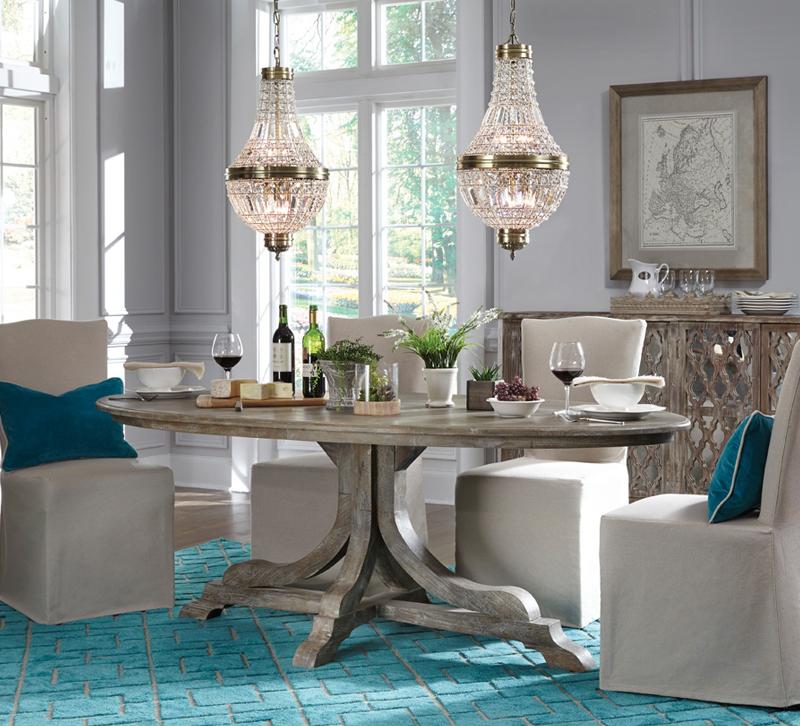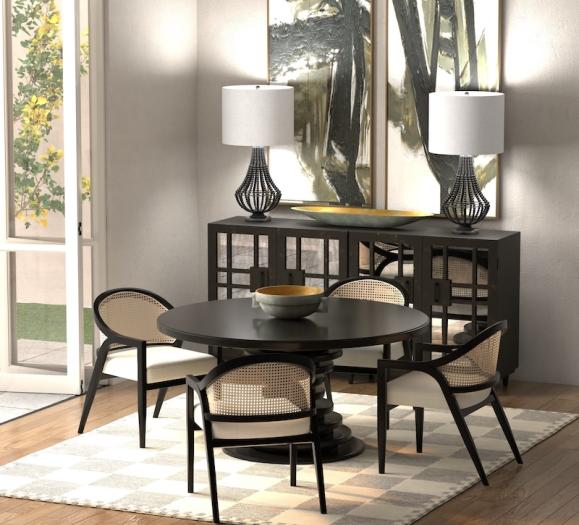Avoiding white after Labor Day, “age-appropriate” dressing, less is more — so-called style rules were meant to broken. So when the design team at the Salt Lake City-based interior design firm Studio McGee tackled a teeny, tiny dining room in one of their recent projects, they took the outdated interior design guidelines about scaling down for a small space and disregarded them completely.
“In our Denver Tudor project, we hung an oversized lantern in a very small dining room, ” says the Studio McGee design team. “It's still balanced with a large table and hung at the right height for function. It's not the fixture size you'd initially envision for a small space, but it works! What's important is understanding the logic behind the rules — then you can break them.”
With that rebel-rousing mantra in mind, read on for Studio McGee’s top three tips for using hanging dining room lights.
#1 Size (sometimes) matters
“A fixture that is far too small for a table will not only look awkward, it won't functionally work as lighting for the table,” says the Studio McGee team.
Aim for a chandelier that is roughly one-half to two-thirds the width of the dining table. Give yourself six inches from the edge of the table to the fixture on all sides.
#2: Get the height right
“Achieving scale, balance and functionality is important when you're hanging a light fixture,” says the Studio McGee team. “You want it to looked intentional. When your light fixture is hung at an awkward height, it looks like a mistake.”
For an 8-foot ceiling, hang the chandelier so the bottom sits 30 to 34 inches above the tabletop. For a 9-foot ceiling, the bottom of the chandelier should hang 33 to 35 inches above the tabletop. For ceilings higher than 9 feet, add 3 inches for each additional foot of ceiling.
#3: Light it up
Don’t be fooled by its good looks; lighting has important work to do. To determine the best chandelier for the job, the Studio McGee design team always takes into the account the amount of light needed in the room.
“If [the fixture you’re considering] is the only source of light in the room, make sure to pick something with multiple bulbs or consider other ways of adding light, such as recessed lighting or lamps on a console table,” says the team.
For more tips and tricks, check out Studio McGee’s Guide to Hanging Lights.
Designers, how are your clients lighting their dining rooms? Share your best hanging dining room lights tips with us in the comments!







